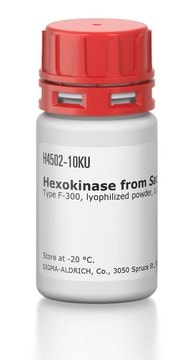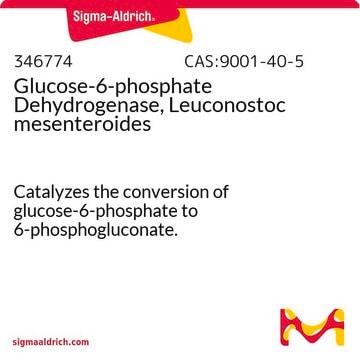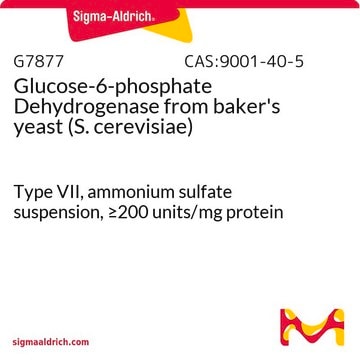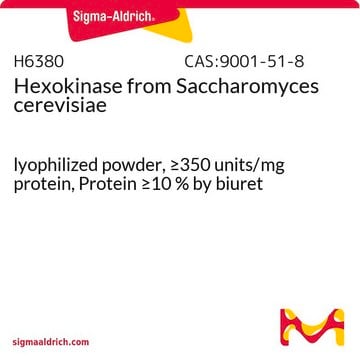G8529
Glucose-6-phosphate Dehydrogenase from Leuconostoc mesenteroides
recombinant, expressed in E. coli, lyophilized powder, ≥550 units/mg protein (biuret)
Synonym(s):
G-6-P-DH
About This Item
Recommended Products
recombinant
expressed in E. coli
Quality Level
form
lyophilized powder
specific activity
≥550 units/mg protein (biuret)
composition
Protein, 10-40% biuret
application(s)
agriculture
foreign activity
creatine phosphokinase, glutathione reductase, myokinase, NADH oxidase, NADPH oxidase, phosphoglucomutase, 6-phosphogluconic dehydrogenase, phosphoglucose isomerase, lactic dehydrogenase, hexokinase ≤0.01%
storage temp.
2-8°C
Looking for similar products? Visit Product Comparison Guide
Application
- in the coupled spectrophotometric assay for PGI (F6P to G6P reaction)
- to study the starch time course using Nicotiana tabacum leaves
- to determine the glucose content in the root and stem samples of Quercus velutina Lam. saplings
- to assay glucose using a starch sample of wild-type and transgenic Arabidopsis whole seedlings
Biochem/physiol Actions
Unit Definition
Physical form
Storage Class Code
11 - Combustible Solids
WGK
WGK 3
Flash Point(F)
Not applicable
Flash Point(C)
Not applicable
Personal Protective Equipment
Certificates of Analysis (COA)
Search for Certificates of Analysis (COA) by entering the products Lot/Batch Number. Lot and Batch Numbers can be found on a product’s label following the words ‘Lot’ or ‘Batch’.
Already Own This Product?
Find documentation for the products that you have recently purchased in the Document Library.
Customers Also Viewed
Our team of scientists has experience in all areas of research including Life Science, Material Science, Chemical Synthesis, Chromatography, Analytical and many others.
Contact Technical Service










